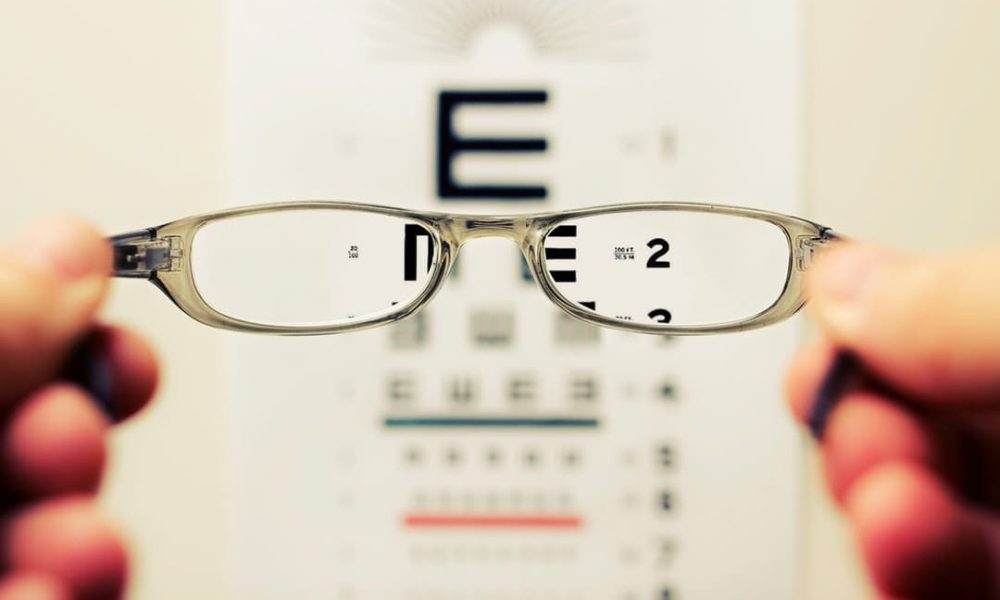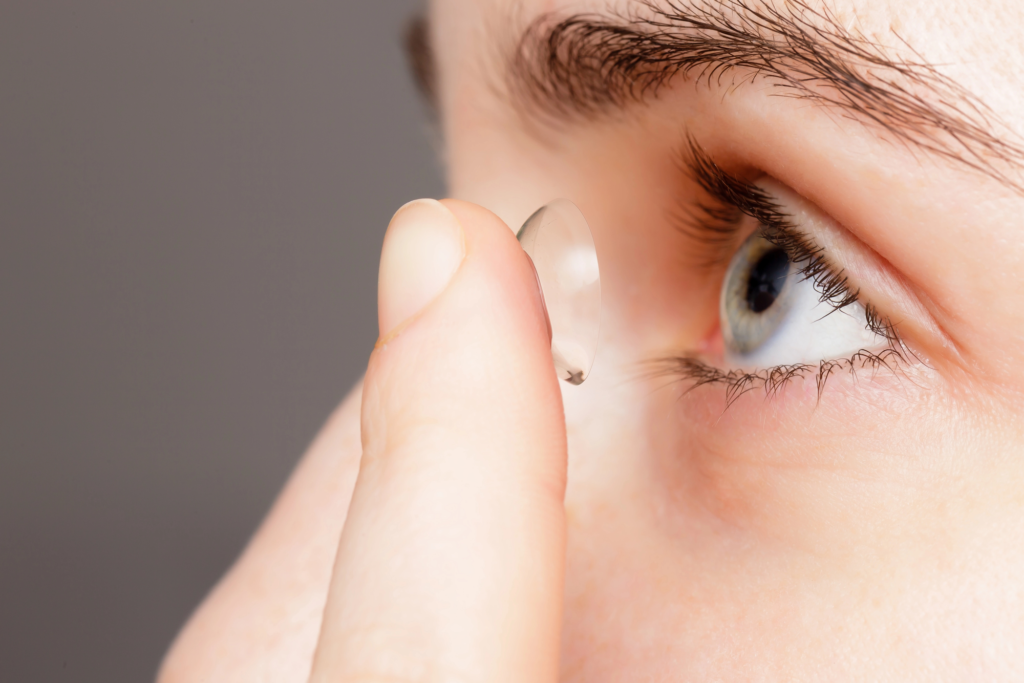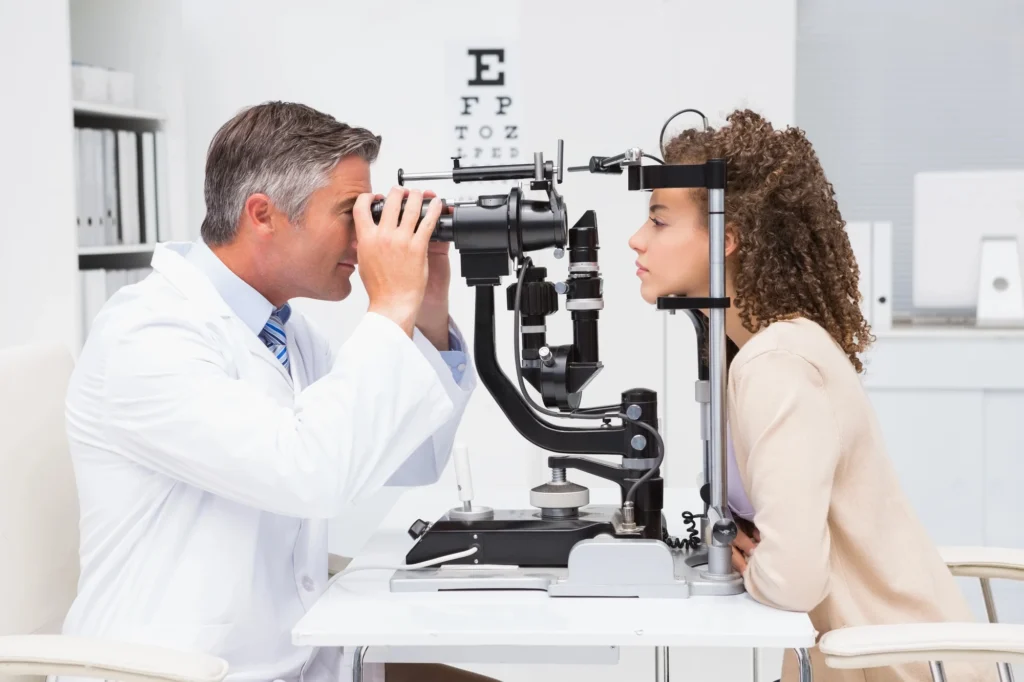How long has it been since you had your eyes checked to see if your eyeglass prescription changed?
The American Optometric Association recommends that adults who are asymptomatic or loss risk get their eyes examined at least every two years. For adults who are at risk, they recommend getting an eye exam every year, unless recommended otherwise by their doctor.
The Center for Disease Control and Prevention notes that having your eyes examined is an important part of taking care of your health. Because when you get an eye exam, your eye doctor also checks your eyes for early signs of eye disease, eye movement issues, depth perception problems, and more.
Whether you have had your eyes examined as recommended or not, there are issues that can arise that indicate your vision may have changed since you last got new glasses. If you notice any of these symptoms, you should make an appointment to see your eye doctor as soon as possible.
Here’s what you should be looking for.
1. Your Vision Is Blurry
Blurry vision can occur for many reasons. If you notice blurry vision in one or both eyes, it could be a sign that your prescription needs updating. Blurred vision can result from nearsightedness, farsightedness, or astigmatism. However, it can also be a sign of developing cataracts or other serious eye conditions.
For pregnant women, blurred vision or double vision can indicate high blood pressure or gestational diabetes. If you experience these symptoms, consult both an eye doctor and a medical doctor.
2. You’re Experiencing Frequent Headaches
If you’re getting more headaches than usual, it may be due to a change in your vision. Even a slight alteration in your prescription can cause your eyes to strain, leading to headaches. The location of the headache can vary depending on whether you’re nearsighted or farsighted, but pain between your eyebrows and the front of your head is often eye-related.
3. You Find Yourself Squinting More
Squinting is a natural response when your eyes struggle to focus. It temporarily reduces the amount of light entering the eye and alters its shape, helping you see more clearly. However, if you’re squinting at objects you used to see perfectly fine, it’s likely time for a new prescription.
4. Your Eyes Often Feel Strained or Tired
It’s normal for your eyes to feel strained or tired after prolonged use, such as working on a computer all day. But if this feeling persists despite self-care, it might be a sign that your prescription is outdated. In such cases, an anti-reflective coating on your lenses might help reduce screen glare and eye strain.
5. You’re Having Difficulty Driving at Night
Many people experience difficulty driving at night due to issues like glare from oncoming headlights. This can be exacerbated by an outdated prescription or the onset of eye conditions such as cataracts. Anti-glare lenses can improve night driving, so consider updating your prescription if you’re having trouble seeing on the road at night.
6. Your Glasses Are Damaged
Even if you take good care of your glasses, wear and tear are inevitable. Scratched or cracked lenses can cause headaches or eye strain. If your glasses have special coatings, these can wear out over time, causing your vision to become blurry. Additionally, bent or broken frames can cause your glasses to sit improperly, affecting how well you see through your lenses.
7. It’s Been a While Since Your Last Eye Exam
If it’s been longer than recommended since your last eye exam, it’s time to schedule one, even if you haven’t noticed any changes in your vision. Regular eye exams are crucial for catching potential issues early, such as eye diseases and other abnormalities.
FAQ Section
How Long Does It Take to Get Used to New Glasses?
Adjusting to new glasses can take anywhere from a few days to a few weeks. It’s normal to experience mild discomfort, such as headaches or a feeling of dizziness, as your eyes adapt to the new prescription.
What Are the Symptoms of Adjusting to New Glasses?
Common symptoms when adjusting to new glasses include headaches, nausea, dizziness, and a sense of distortion or imbalance. These symptoms should subside as your eyes adjust, but if they persist beyond a few weeks, consult your eye doctor.
How Often Should You Get New Glasses?
You should generally get a new pair of glasses every 1 to 2 years. However, if your vision changes more frequently, or if your glasses are damaged, you may need to replace them sooner.
What Happens If You Wear Glasses That Are Too Strong?
Wearing glasses with a prescription that’s too strong can cause eye strain, headaches, and dizziness. It can also lead to long-term discomfort and potentially worsen your vision. If you suspect your glasses are too strong, visit your eye doctor for a reassessment.
Your vision is one of your most important senses, and keeping it sharp should be a top priority. If you’re experiencing any of the signs mentioned above, don’t hesitate to schedule an eye exam. Regular check-ups will help ensure that your prescription is up-to-date and that your eyes remain healthy.
Make an Appointment for a New Eyeglass Prescription
Regular eye exams should be a part of your overall health care plan. Don’t put off seeing your eye doctor simply because you don’t think you need a change in your eyeglass prescription. Vision changes can be subtle, so it is possible you may not notice changes over time.
We can help find the best corrective vision solutions for you. Contact us today to set an appointment for an eye exam.





